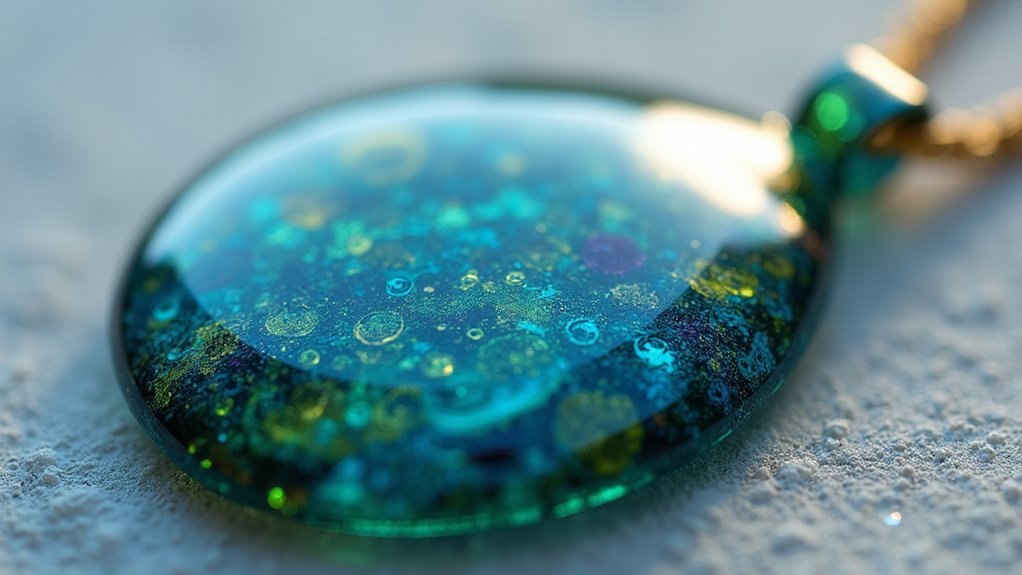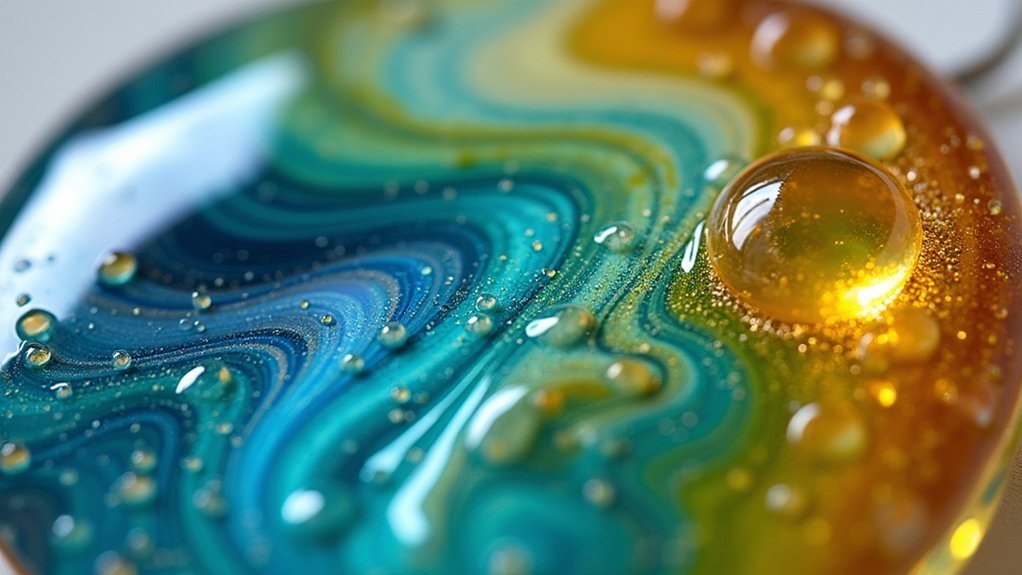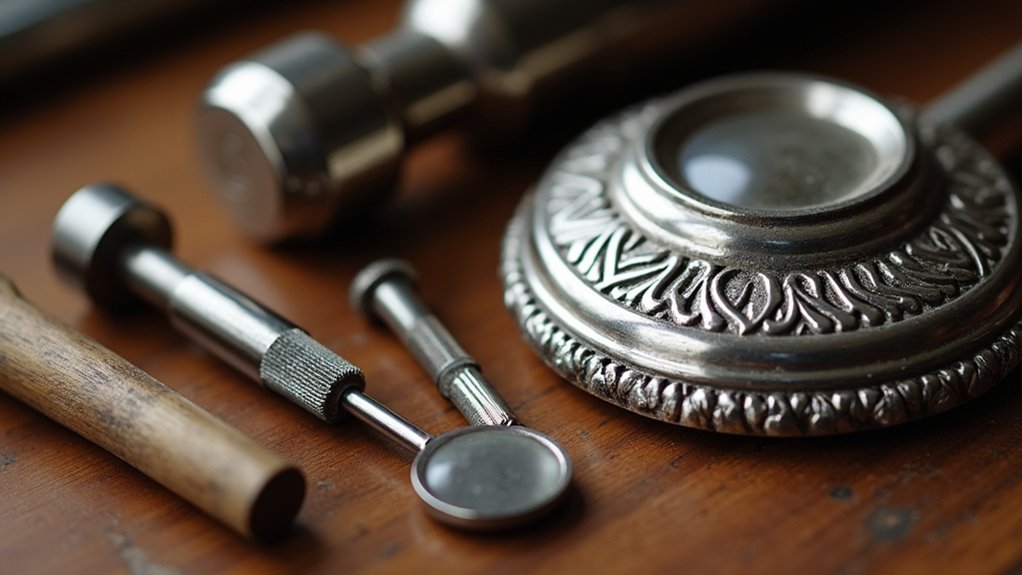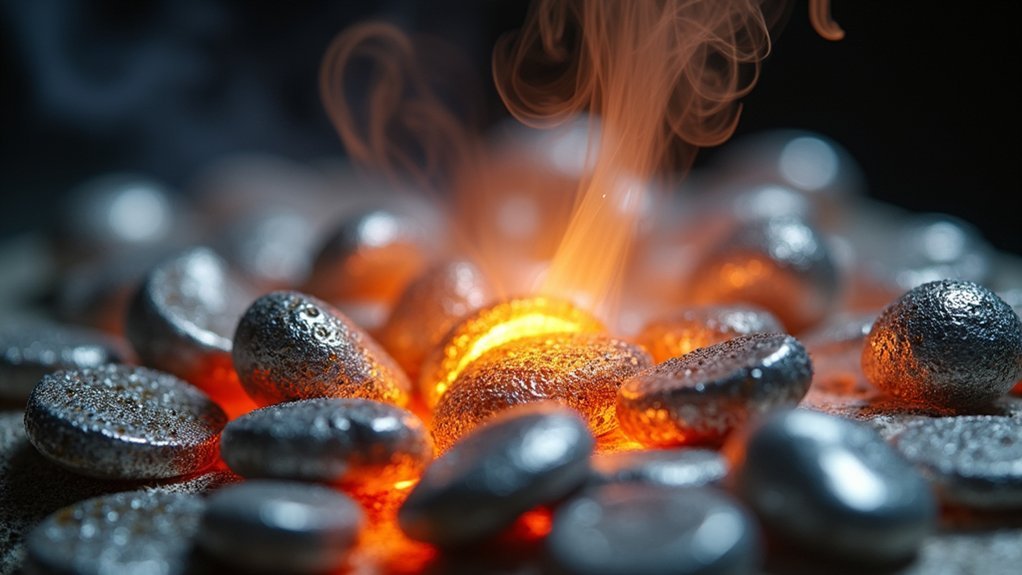You can elevate your pendant-making with three powerful transparent enamel techniques. First, layer multiple transparent coats over an opaque base, allowing complete drying between applications to build stunning color depth. Second, try sgraffito by scratching through transparent enamel with sharp tools to reveal the metal beneath for intricate patterns. Third, use flow and tilt methods—apply contrasting colors through a sifter, then tilt your piece to create organic color blends. Master these fundamentals to access endless creative possibilities.
Layering Multiple Transparent Coats for Color Depth

When you layer multiple transparent enamel coats, you’ll discover that each application builds upon the previous one to create remarkable color depth and visual richness.
Start with a base coat of opaque enamel to enhance vibrancy and provide contrast for your transparent layers. Apply each transparent enamel coat methodically, allowing complete drying between applications to prevent bubbling during firing.
Building vibrant enamel depth requires methodical layering—start with opaque base coats, then apply transparent layers with complete drying between each application.
You’ll notice different shades emerge as colors interact through layering. Test combinations on sample pieces first to understand these color relationships.
Monitor kiln firing temperatures carefully, as heat affects the clarity and depth of your transparent enamels. Each successive coat adds complexity and richness to your pendant.
The key lies in patience—rushing between coats compromises the final result’s quality and visual impact.
Sgraffito Design Techniques on Transparent Enamel
Scratch through your dried transparent enamel layer to reveal the gleaming metal beneath—this sgraffito technique transforms simple pendant surfaces into intricate works of art. You’ll use sharp tools to etch detailed patterns into your transparent enamel surface, creating stunning contrast between scratched areas and untouched sections.
| Sgraffito Element | Design Impact |
|---|---|
| Single layer etch | Simple metal reveal |
| Multiple layers | Varied color interactions |
| Fine line work | Delicate patterns |
| Bold scratches | Dramatic contrast |
| Partial removal | Subtle transparency |
Apply multiple transparent enamel layers before scratching to expose greater creativity in your designs. The fired piece showcases enhanced visual depth as light interacts with both scratched metal and remaining enamel. Remember to fire at appropriate temperatures after completing your sgraffito techniques for proper adhesion.
Flow and Tilt Methods for Blended Color Effects

Beyond creating contrast through scratching techniques, you can achieve seamless color gradations by manipulating wet enamel directly during application.
The flow technique involves applying contrasting colors through a small sifter while strategically tilting your piece. This allows different transparent enamels to blend naturally, creating organic patterns and unique color interactions.
Before firing, spray a light mist of water onto the surface to enhance the merging colors. If you’re concerned about excess moisture, apply a thin soft flux coat beforehand for a smooth finish.
A gentle water mist before firing helps colors blend beautifully, while soft flux prevents moisture issues and ensures smooth results.
When using the tilt method, carefully control your angle to direct enamel flow without losing material over the edges. Experiment with various transparent enamel combinations to discover unexpected color relationships that’ll elevate your enamel design beyond traditional techniques.
Frequently Asked Questions
What Are the Techniques of Enamel Jewelry?
You’ll find four main enamel jewelry techniques: cloisonné uses wire compartments, champlevé creates recessed areas, plique-à-jour forms stained glass effects, and Limoges involves direct painting on metal surfaces.
Which of the Enameling Techniques Is the Most Difficult?
You’ll find plique-à-jour the most challenging enameling technique. It requires creating transparent enamel without backing, demanding perfect balance between structural integrity and light transmission while mastering delicate firing processes.
What Is the Champleve Technique?
You’ll create recessed areas in metal by etching or engraving, then fill those depressions with enamel. This technique produces raised designs with vibrant colors, relying on metal depth rather than wires to contain the enamel.
Can You Enamel Without a Kiln?
You can enamel without a kiln using torch firing techniques. Apply powdered enamel to your metal piece, then fire it with a handheld torch. You’ll need consistent distance control and proper safety precautions for success.
In Summary
You’ve now explored three distinct approaches to working with transparent enamel that’ll elevate your jewelry making. Whether you’re building rich color depth through layering, creating intricate sgraffito patterns, or achieving smooth color gradations with flow techniques, each method offers unique creative possibilities. Don’t be afraid to combine these techniques in a single piece. Practice with sample metals first, and you’ll soon develop your own signature transparent enamel style.





Leave a Reply